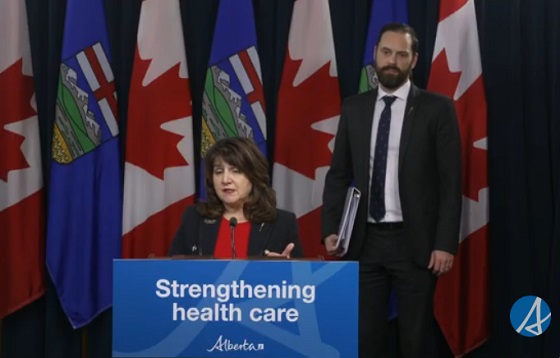Brownstone Institute
Why is Everyone Concerned About the WHO?

From the Brownstone Institute
BY
Over the past two years you’ve probably heard about the attempted WHO power grab. Here’s everything you need to know to understand the status today:
Overview:
- The build-out of a massive and expensive global biosecurity system is underway, allegedly to improve our preparedness for future pandemics or biological terrorism. In aid of this agenda two documents are being prepared through the WHO: a broad series of amendments to the existing International Health Regulations (2005) (IHR) and a proposed, entirely new pandemic treaty.
- A Pandemic Fund a.k.a. financial intermediary fund to aid preparedness worldwide has been established by the World Bank and WHO.
- Multiple names have been used for the new treaty as new drafts are produced, such as: Pandemic Treaty, WHO CA+, Bureau Text, Pandemic Accord, and Pandemic Agreement.
- Negotiations for these documents are being held in secret. The latest available draft of the IHR amendments is from February 6th, 2023.
- The latest Pandemic Treaty draft is from October 30th, 2023.
- Both the amendments and treaty are on a deadline to be considered for adoption at the 77th annual World Health Assembly meeting in May 2024.
- WHO’s principal attorney Steven Solomon has announced that he crafted a legal fig leaf to avoid making the draft amendments public by January 2024, as required by the WHO Constitution.
How Would these Drafts Become International Law?
- A treaty requires a two-thirds vote of the World Health Assembly’s 194 member states to be adopted and is binding only for States that have ratified or accepted it (Article 19 and 20, WHO Constitution). However, it could be enacted into force in the US by a simple signature, without Senate ratification. [See CRS report, “US proposals to Amend the International Health Regulations.”]
- The IHRs and any amendments thereto are adopted by simple majority, and become binding to all WHO Member States, unless a state has rejected or made reservations to them within predefined timeframes (Articles 21 and 22, WHO Constitution; Rule 72, Rules of procedures of the World Health Assembly).
- Last year, however, amendments to 5 articles of the IHRs were considered in opaque committee meetings during the 75th annual meeting, and then adopted by consensus without a formal vote. This process makes it harder to blame individual diplomats for their votes.
- The current draft of the IHR Amendments would allow the Director-General of WHO or Regional Directors to declare a Public Health Emergency of International Concern (PHEIC), or the potential for one, without meeting any specific criteria (Article 12). The WHO would then assume management of the PHEIC and issue binding directives to concerned States.
- PHEICS and potential PHEICs could be declared without the agreement of the concerned State or States.
- WHO’s unelected officials (Director-General, Regional Directors, technical staff) could dictate measures including quarantines, testing and vaccination requirements, lockdowns, border closures, etc.
- WHO officials would not be accountable for their decisions and have diplomatic immunity.

What are Some Specific Problems with the WHO’s Proposed Amendments?
- Article 3 of the proposed IHR amendments removes protections for human rights:
- Struck from the IHR is the crucial guarantee of human rights as a foundation of public health: “The implementation of these Regulations shall be
with full respect for the dignity, human rights and fundamental freedoms of persons…” - This has been replaced with the following legally meaningless phrase: “based on the principles of equity, inclusivity, coherence…”
- Struck from the IHR is the crucial guarantee of human rights as a foundation of public health: “The implementation of these Regulations shall be
- Proposed article 43.4 of the IHR notes that the WHO could ban the use of certain medications or other measures during a pandemic, since its ‘recommendations’ would be binding:
- “WHO shall make recommendations to the State Party concerned to modify or rescind the application of the additional health measures in case of finding such measures as disproportionate or excessive. The Director General shall convene an Emergency Committee for the purposes of this paragraph.”
- States’ obligations in the proposed IHR Amendments would include:
- Conducting extensive biological surveillance of microorganisms and people (Article 5);
- Monitoring mainstream and social media and to censor “false and unreliable information” regarding WHO-designated public health threats (Article 44.1(h)(new));
- Taking medical supplies from one State for use by other States as determined by the WHO (New Article 13A);
- Giving up intellectual property for use by other States or third parties (New Article 13A);
- Transferring genetic sequence data for “pathogens capable of causing pandemics and epidemics or other high-risk situations” to other Nations or third parties, despite the risks this entails (Article 44.1(f) (new)).
What are Problems with the Proposed Pandemic Treaty?
All the Pandemic Treaty drafts (as well as the proposed Amendments to the IHR) produced so far are based on a set of false assumptions. These include the following:
- The WHO Constitution states that, “The WHO is the directing and coordinating authority on international health work.” Recently, to justify becoming the global director of health, the WHO disingenuously dropped the last word–and began claiming it already was “the directing and coordinating authority on international health.” But it is not and never has been. The WHO has always been an advisory body, responding to requests for help from member states. It has never previously been a directing or governing body with authority to govern member states. Here is the relevant part of its Constitution, on page 2:

- The WHO claims that “international spread of disease demands the widest international cooperation,” which ignores the fact that international spread may be quite limited and able to be managed by local or national authorities; ignores that the most appropriate responses will be determined by the specific circumstances, and not by a WHO algorithm; and ignores that the WHO has limited infectious disease expertise relative to large nation states.
- The claim made by WHO is that nations will be able to retain national sovereignty through their ability to pass and enforce health laws, while they will simultaneously be bound and accountable to obey the directives from the WHO on health. This is contradictory and designed to confuse: if the WHO can impose its public health decisions on member states, it and not the states will have sovereignty over health.
- The tremendous cost and suffering from COVID are being blamed on lack of preparedness. However, the US was spending about $10 billion yearly on pandemic preparedness before the pandemic. Yet we had few masks, gloves, gowns, drugs, etc. when the pandemic struck. Why would we expect a central WHO authority, which relies on vested interests for 85 percent of its funding, to do any better?

- The claim is that lack of equity led to failure to share drugs, vaccines, and personal protective equipment (PPE)–ignoring the fact that no nation had sufficient PPE or tests early in the pandemic, and that it was nations withholding generic drugs from their populations that caused important treatment shortages. Furthermore, now that we know the COVID vaccines result in negative efficacy several months post-vaccination (making recipients more susceptible to developing COVID), it is apparent that nations that were last in line for COVID vaccines and whose populations are mostly unvaccinated have fared better overall than those who received vaccines for their populations. The so-called lack of equity was fortuitous for them!
- The claim is that pandemics invariably arise at the animal-human interface and that they are natural in origin. Neither is true for COVID or monkeypox, the last two declared public health emergencies of international concern, which came from laboratories.
- The claim is that the vaguely defined “One Health approach” can prevent or detect pandemics and ameliorate them. Yet it remains unclear what this strategy is, and there is no evidence to support the claim that One Health offers any public health advantages whatsoever.
- The claim is that increasing the capture and study of “potential pandemic pathogens” will be accomplished safely and yield useful pandemic products, when neither is true. The CDC’s Select Agent Program receives 200 reports yearly of accidents, losses or thefts of potential pandemic pathogens from high containment labs within the United States: 4 reports (and 4 potential pandemics) per week! And this is only within the US.
- Drafts of the treaty and amendments assume that pharmaceutical manufacturers will agree to give up certain intellectual property rights. In fact, neither developing nations nor pharmaceutical manufacturers are happy with the recent treaty proposal on intellectual property.
- The claim is that the UN adopted a Declaration on pandemic preparedness supporting the WHO plan on September 20, 2023. In fact, 11 countries rejected the Declaration procedure and it was only signed by the UN General Assembly president, representing himself and not the UN General Assembly.
- The claim is that the WHO has the legal right to require nations to censor “infodemics” and only allow the WHO’s public health narratives to be shared, yet this violates our First Amendment’s freedom of speech.
- The claim is that health “coverage” (insurance) will automatically provide the world’s citizens access to a broad range of health care, while the primary reason for lack of access to healthcare is the lack of practitioners and facilities, not lack of “coverage.”
Here are some Specific Examples of What is Wrong with the Treaty:
Article 3, #2. Sovereignty
“States have, in accordance with the charter of the United Nations and the general principles of international law, the sovereign right to legislate and to implement legislation in pursuance of their health policies.”
This language fails to address the issue of the WHO assuming sovereignty for health matters over states through this treaty. It is a disingenuous attempt to grab sovereignty while claiming otherwise.
Article 3, #3. Equity
“Equity includes the unhindered, fair, equitable and timely access to safe, effective, quality and affordable pandemic – related products and services, information, pandemic – related technologies and social protection.”
However, Article 9, #2 (d) states that parties shall promote “infodemic management,” and infodemic is defined in Article 1(c) as false or misleading information. Article 18, #1 instructs the Parties to “combat false, misleading, misinformation or disinformation…” In earlier drafts the WHO spelled out that only the WHO’s public health narrative would be allowed to spread.
Article 4, #3. Pandemic Prevention and Public Health Surveillance
“The Parties shall cooperate with the support of the WHO Secretariat to strengthen and maintain public health laboratory and diagnostic capacities, especially with respect to the capacity to perform genetic sequencing, data science to assess the risk of detected pathogens and to safely handle samples containing pathogens and the use of related digital tools.”
While this section omits incentivizing Gain-of-Function laboratory research (which was included in the earlier Bureau draft) it does direct nations to perform genetic sequencing of potential pandemic pathogens (i.e., biological warfare agents) they find and to safely handle them, which requires high containment (BSL3/4) laboratories. Also in Article 4 is the need to “develop, strengthen and maintain the capacity to (i) detect, identify and characterize pathogens presenting significant risks…” indicating the directive for nations to perform surveillance to seek out such pathogens and study them.
Article 6, #4. Preparedness, Readiness, and Resilience
“The Parties shall establish, building on existing arrangements as appropriate, genomics, risk assessment, and laboratory networks in order to conduct surveillance and sharing of emerging pathogens with pandemic potential, with such sharing pursuant to the terms and modalities established in Article 12.” Article 1 (h) defined ‘ “pathogen with pandemic potential” as any pathogen that has been identified to infect humans and that is potentially highly transmissible and capable of wide, uncontrollable spread in human populations and highly virulent, making it likely to cause significant morbidity and/or mortality in humans.”
Why does the WHO require nations to go out and find potential pandemic pathogens (a.k.a. biological warfare agents) and supply both biologic samples and pathogens’ genetic sequences to the WHO, where they will be shared with pharmaceutical companies, research centers and academic institutions, as well as possible others? They are also to share the genetic sequences online, where hackers could obtain the sequences and produce biological warfare agents. Yet this behavior is prohibited by Security Council Resolution 1540.
Article 8, #3. Preparedness Monitoring and Functional Reviews
“The parties shall, building on existing tools, develop and implement an inclusive, transparent, effective and efficient pandemic prevention, preparedness and response monitoring and evaluation system.”
Yet 4 different monitoring systems (“tools”–see graphic below) have been used to gauge nations’ readiness for pandemics and all 4 failed to predict how well they would do when COVID appeared. There is no acknowledgement of the failures of our assessment tools, nor discussion of whether there exist any useful assessment tools. And this begs the question why, if our means of assessing progress against pandemics failed, do we think that similar efforts are likely to be successful in future?

Article 10, #1 (d). Sustainable Production
“The Parties encourage entities, including manufacturers within their respective jurisdictions, in particular those that receive significant public financing, to grant, subject to any existing licensing restrictions, on mutually agreed terms, non-exclusive royalty-free licenses to any manufacturers, particularly from developing countries, to use their intellectual property and other protected substances, products, technology, know-how, information and knowledge used in the process of pandemic – related product development and production, in particular for pre-pandemic and pandemic diagnostics, vaccines and therapeutics for use in agreed developing countries.”
This and related sections are probably what make the pharma organization so upset with the current Treaty draft.
Article 12, #4 (a) i (2) Access and Benefit-Sharing
“Upload the genetic sequence of such WHO PABS (Pathogen Access and Benefits System) material to one or more publicly accessible databases of its choice, provided that the database has put in place an appropriate arrangement with respect to WHO PABS material.”
The treaty requires the sharing of pathogens and the need to identify and upload their genetic sequences online, where they will be accessible. This could also be called proliferation of biological weapons agents, which is generally considered a crime. In the US, “Select Agents” are those designated to have pandemic potential, and the select agent program is managed by CDC and USDA. For safety, CDC must give permission to transfer select agents. Yet the select agent rules are ignored in this WHO Treaty, which demands transfer of agents that could cause a worldwide pandemic. And in an apparent effort to handwave over existing rules, the draft states in Article 12, #8.
“The Parties shall ensure that such a system is consistent with, supportive of, and does not run counter to, the objectives of the Convention on Biological Diversity and the Nagoya Protocol thereto. The WHO PABS system will provide certainty and legal clarity to the providers and users of WHO PABS materials.”
Article 13, #3 (e). Global Supply Chain and Logistics (SCL)
“The terms of the WHO SCL Network shall include: facilitating the negotiation and agreement of advance purchase commitments and procurement contracts for pandemic-related products.”
Advance purchase commitments are contracts that obligate nations to buy products for pandemics in advance, sight unseen. Neither the manufacturer nor the state party knows what is coming, but once WHO issues a pandemic declaration, the contracts are activated and the US government will have to buy what the manufacturer produces. The 2009 swine flu pandemic provides a useful example. Advance purchase commitments led to tens of billions in vaccine purchases in North America and Europe for a flu that was less severe than normal. The GSK Pandemrix brand of vaccine led to over 1,300 cases of severe narcolepsy, primarily in adolescents. Rapid production of vaccines for which profits are guaranteed and liability is waived has never once been a win for the consumer.
Article 14. Regulatory Strengthening
Nations are to harmonize their regulatory requirements, expedite approvals and authorizations and ensure that legal frameworks are in place to support emergency approvals. This incentivizes a race to the bottom for drug and vaccine approval standards, particularly during emergencies.
Republished from the author’s Substack
Further Reading:
The WHO’s Proposed Treaty Will Increase Man-Made Pandemics, by Meryl Nass M.D.
What Can Countries Do Right Now to Slow Down the WHO? (PDF Download)
Collected IHR Amendment Drafts
Collected Pandemic Treaty Drafts
Brownstone Institute
Bizarre Decisions about Nicotine Pouches Lead to the Wrong Products on Shelves

From the Brownstone Institute
A walk through a dozen convenience stores in Montgomery County, Pennsylvania, says a lot about how US nicotine policy actually works. Only about one in eight nicotine-pouch products for sale is legal. The rest are unauthorized—but they’re not all the same. Some are brightly branded, with uncertain ingredients, not approved by any Western regulator, and clearly aimed at impulse buyers. Others—like Sweden’s NOAT—are the opposite: muted, well-made, adult-oriented, and already approved for sale in Europe.
Yet in the United States, NOAT has been told to stop selling. In September 2025, the Food and Drug Administration (FDA) issued the company a warning letter for offering nicotine pouches without marketing authorization. That might make sense if the products were dangerous, but they appear to be among the safest on the market: mild flavors, low nicotine levels, and recyclable paper packaging. In Europe, regulators consider them acceptable. In America, they’re banned. The decision looks, at best, strange—and possibly arbitrary.
What the Market Shows
My October 2025 audit was straightforward. I visited twelve stores and recorded every distinct pouch product visible for sale at the counter. If the item matched one of the twenty ZYN products that the FDA authorized in January, it was counted as legal. Everything else was counted as illegal.
Two of the stores told me they had recently received FDA letters and had already removed most illegal stock. The other ten stores were still dominated by unauthorized products—more than 93 percent of what was on display. Across all twelve locations, about 12 percent of products were legal ZYN, and about 88 percent were not.
The illegal share wasn’t uniform. Many of the unauthorized products were clearly high-nicotine imports with flashy names like Loop, Velo, and Zimo. These products may be fine, but some are probably high in contaminants, and a few often with very high nicotine levels. Others were subdued, plainly meant for adult users. NOAT was a good example of that second group: simple packaging, oat-based filler, restrained flavoring, and branding that makes no effort to look “cool.” It’s the kind of product any regulator serious about harm reduction would welcome.
Enforcement Works
To the FDA’s credit, enforcement does make a difference. The two stores that received official letters quickly pulled their illegal stock. That mirrors the agency’s broader efforts this year: new import alerts to detain unauthorized tobacco products at the border (see also Import Alert 98-06), and hundreds of warning letters to retailers, importers, and distributors.
But effective enforcement can’t solve a supply problem. The list of legal nicotine-pouch products is still extremely short—only a narrow range of ZYN items. Adults who want more variety, or stores that want to meet that demand, inevitably turn to gray-market suppliers. The more limited the legal catalog, the more the illegal market thrives.
Why the NOAT Decision Appears Bizarre
The FDA’s own actions make the situation hard to explain. In January 2025, it authorized twenty ZYN products after finding that they contained far fewer harmful chemicals than cigarettes and could help adult smokers switch. That was progress. But nine months later, the FDA has approved nothing else—while sending a warning letter to NOAT, arguably the least youth-oriented pouch line in the world.
The outcome is bad for legal sellers and public health. ZYN is legal; a handful of clearly risky, high-nicotine imports continue to circulate; and a mild, adult-market brand that meets European safety and labeling rules is banned. Officially, NOAT’s problem is procedural—it lacks a marketing order. But in practical terms, the FDA is punishing the very design choices it claims to value: simplicity, low appeal to minors, and clean ingredients.
This approach also ignores the differences in actual risk. Studies consistently show that nicotine pouches have far fewer toxins than cigarettes and far less variability than many vapes. The biggest pouch concerns are uneven nicotine levels and occasional traces of tobacco-specific nitrosamines, depending on manufacturing quality. The serious contamination issues—heavy metals and inconsistent dosage—belong mostly to disposable vapes, particularly the flood of unregulated imports from China. Treating all “unauthorized” products as equally bad blurs those distinctions and undermines proportional enforcement.
A Better Balance: Enforce Upstream, Widen the Legal Path
My small Montgomery County survey suggests a simple formula for improvement.
First, keep enforcement targeted and focused on suppliers, not just clerks. Warning letters clearly change behavior at the store level, but the biggest impact will come from auditing distributors and importers, and stopping bad shipments before they reach retail shelves.
Second, make compliance easy. A single-page list of authorized nicotine-pouch products—currently the twenty approved ZYN items—should be posted in every store and attached to distributor invoices. Point-of-sale systems can block barcodes for anything not on the list, and retailers could affirm, once a year, that they stock only approved items.
Third, widen the legal lane. The FDA launched a pilot program in September 2025 to speed review of new pouch applications. That program should spell out exactly what evidence is needed—chemical data, toxicology, nicotine release rates, and behavioral studies—and make timely decisions. If products like NOAT meet those standards, they should be authorized quickly. Legal competition among adult-oriented brands will crowd out the sketchy imports far faster than enforcement alone.
The Bottom Line
Enforcement matters, and the data show it works—where it happens. But the legal market is too narrow to protect consumers or encourage innovation. The current regime leaves a few ZYN products as lonely legal islands in a sea of gray-market pouches that range from sensible to reckless.
The FDA’s treatment of NOAT stands out as a case study in inconsistency: a quiet, adult-focused brand approved in Europe yet effectively banned in the US, while flashier and riskier options continue to slip through. That’s not a public-health victory; it’s a missed opportunity.
If the goal is to help adult smokers move to lower-risk products while keeping youth use low, the path forward is clear: enforce smartly, make compliance easy, and give good products a fair shot. Right now, we’re doing the first part well—but failing at the second and third. It’s time to fix that.
Addictions
The War on Commonsense Nicotine Regulation

From the Brownstone Institute
Cigarettes kill nearly half a million Americans each year. Everyone knows it, including the Food and Drug Administration. Yet while the most lethal nicotine product remains on sale in every gas station, the FDA continues to block or delay far safer alternatives.
Nicotine pouches—small, smokeless packets tucked under the lip—deliver nicotine without burning tobacco. They eliminate the tar, carbon monoxide, and carcinogens that make cigarettes so deadly. The logic of harm reduction couldn’t be clearer: if smokers can get nicotine without smoke, millions of lives could be saved.
Sweden has already proven the point. Through widespread use of snus and nicotine pouches, the country has cut daily smoking to about 5 percent, the lowest rate in Europe. Lung-cancer deaths are less than half the continental average. This “Swedish Experience” shows that when adults are given safer options, they switch voluntarily—no prohibition required.
In the United States, however, the FDA’s tobacco division has turned this logic on its head. Since Congress gave it sweeping authority in 2009, the agency has demanded that every new product undergo a Premarket Tobacco Product Application, or PMTA, proving it is “appropriate for the protection of public health.” That sounds reasonable until you see how the process works.
Manufacturers must spend millions on speculative modeling about how their products might affect every segment of society—smokers, nonsmokers, youth, and future generations—before they can even reach the market. Unsurprisingly, almost all PMTAs have been denied or shelved. Reduced-risk products sit in limbo while Marlboros and Newports remain untouched.
Only this January did the agency relent slightly, authorizing 20 ZYN nicotine-pouch products made by Swedish Match, now owned by Philip Morris. The FDA admitted the obvious: “The data show that these specific products are appropriate for the protection of public health.” The toxic-chemical levels were far lower than in cigarettes, and adult smokers were more likely to switch than teens were to start.
The decision should have been a turning point. Instead, it exposed the double standard. Other pouch makers—especially smaller firms from Sweden and the US, such as NOAT—remain locked out of the legal market even when their products meet the same technical standards.
The FDA’s inaction has created a black market dominated by unregulated imports, many from China. According to my own research, roughly 85 percent of pouches now sold in convenience stores are technically illegal.
The agency claims that this heavy-handed approach protects kids. But youth pouch use in the US remains very low—about 1.5 percent of high-school students according to the latest National Youth Tobacco Survey—while nearly 30 million American adults still smoke. Denying safer products to millions of addicted adults because a tiny fraction of teens might experiment is the opposite of public-health logic.
There’s a better path. The FDA should base its decisions on science, not fear. If a product dramatically reduces exposure to harmful chemicals, meets strict packaging and marketing standards, and enforces Tobacco 21 age verification, it should be allowed on the market. Population-level effects can be monitored afterward through real-world data on switching and youth use. That’s how drug and vaccine regulation already works.
Sweden’s evidence shows the results of a pragmatic approach: a near-smoke-free society achieved through consumer choice, not coercion. The FDA’s own approval of ZYN proves that such products can meet its legal standard for protecting public health. The next step is consistency—apply the same rules to everyone.
Combustion, not nicotine, is the killer. Until the FDA acts on that simple truth, it will keep protecting the cigarette industry it was supposed to regulate.
-

 Alberta6 hours ago
Alberta6 hours agoFrom Underdog to Top Broodmare
-

 Artificial Intelligence2 days ago
Artificial Intelligence2 days agoTrump’s New AI Focused ‘Manhattan Project’ Adds Pressure To Grid
-

 International1 day ago
International1 day agoAfghan Ex–CIA Partner Accused in D.C. National Guard Ambush
-
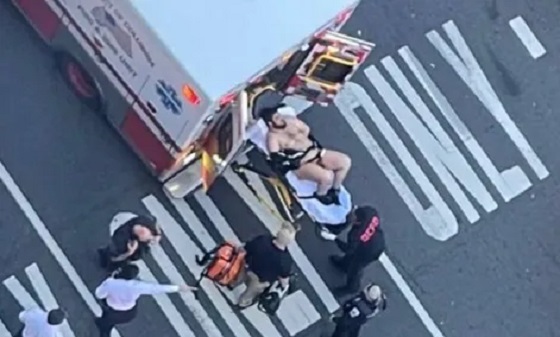
 International2 days ago
International2 days agoTrump orders 500 more troops to reinforce D.C. after Guard shooting
-
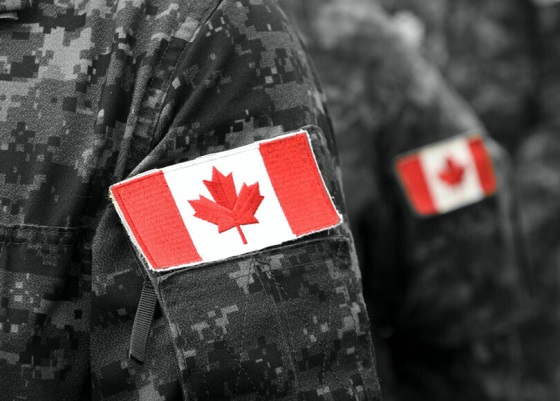
 armed forces2 days ago
armed forces2 days agoCarney’s ‘Shared Sacrifice’ Is a Lie. Only Veterans Are Bleeding for This Budget
-
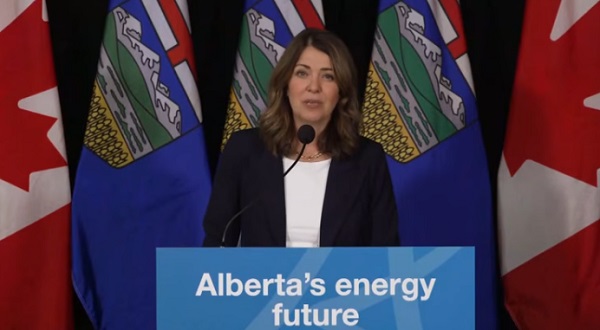
 Alberta1 day ago
Alberta1 day agoAlberta and Ottawa ink landmark energy agreement
-

 Energy1 day ago
Energy1 day agoPoilievre says West Coast Pipeline MOU is no guarantee
-
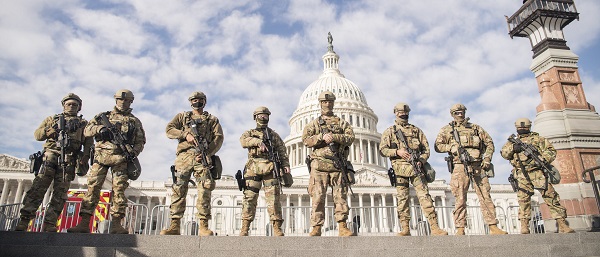
 International2 days ago
International2 days agoTrump Admin Pulls Plug On Afghan Immigration Following National Guard Shooting










